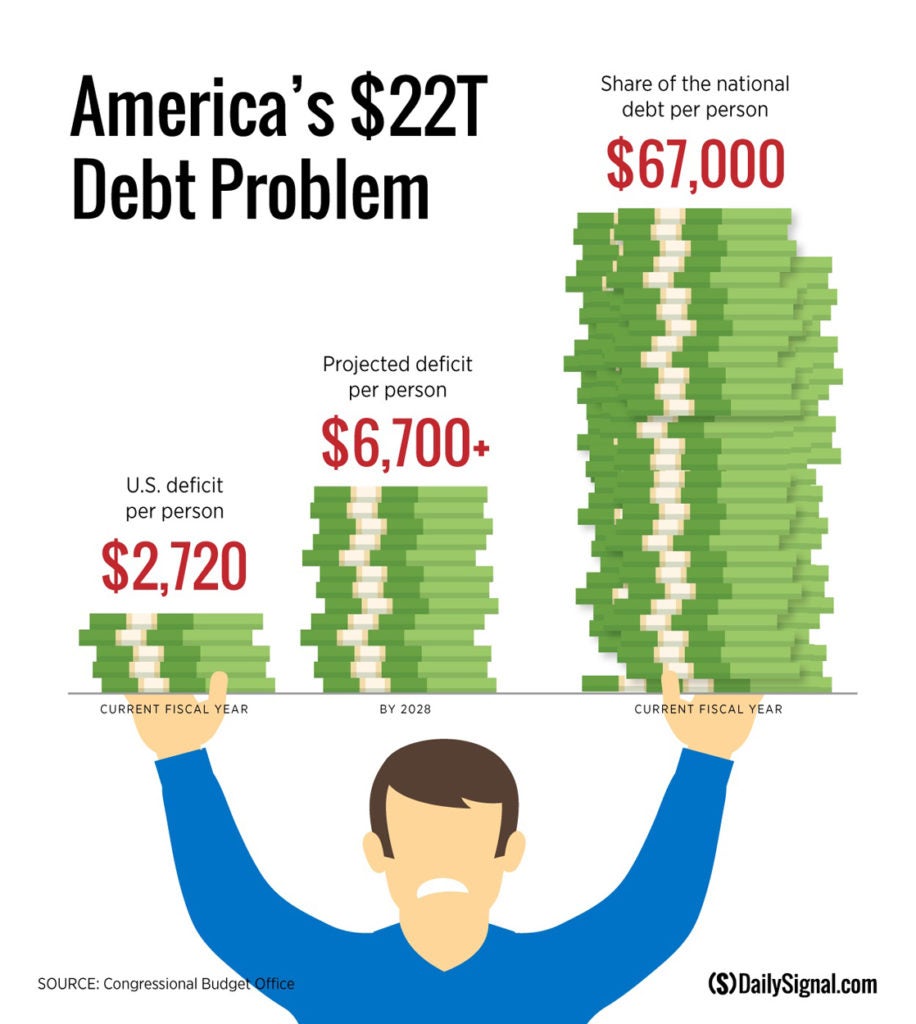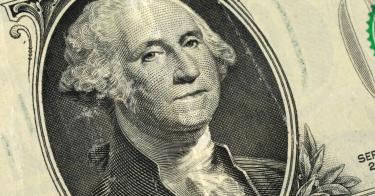President Ronald Reagan’s famous maxim, “Freedom is never more than one generation away from extinction,” remains true today. Yet during times of great prosperity, it’s easy to take things for granted and assume that the good times will remain forever.
Today, despite the present economic boom, two types of bankruptcy threaten America’s fortunes.
The first bankruptcy is a renewed push for the failed ideology of socialism, exemplified by the so-called Green New Deal and Medicare for All.
The second bankruptcy is more literal: America’s skyrocketing national debt.
Even though economic booms are usually a time to bring deficits under control, the federal government is increasingly relying on the national credit card to pay the bills.
The nonpartisan Congressional Budget Office estimates that the current fiscal year deficit will be $896 billion, or more than $2,720 for every American (including children). With a disaster spending bill in the works and Congress discussing another possible caps deal, the deficit could surpass $1 trillion this year.
The last time America incurred such high deficits was in 2012, following the Great Recession. We have no such excuse today.
And it gets worse. The deficit is projected to climb to $1.4 trillion in 2028, which means we would be about $4,000 deeper in the red per person, unless Congress acts to control spending.
All that is on top of the current gross debt of $22 trillion. Each person’s share of today’s debt is already a staggering $67,000—exceeding what the typical American household earns in a year by several thousands of dollars.

This high and rising debt burden has many harmful effects.
For starters, the government will pay $382 billion in interest this year just to service the debt, or $1,160 for each of us. That kind of money would go a long way for most American families, but instead we send it to our creditors—many of whom are foreign nations. China alone owns over $1 trillion in U.S. treasuries.
As the debt increases and interest payments rise, that creates a heavier drag on the economy. Although it is hard to measure how much economic growth we miss out on because of the debt, even relatively small growth effects add up to thousands of dollars lost per year for every worker.
This is maddeningly unfair to younger and future generations. Not only are today’s children being saddled with tens of thousands of dollars in national debt, but they may also have to navigate an economy that offers them less opportunity than they would have if political leaders were more responsible with the nation’s finances.
It is tempting to look at all of that bad news and throw up our hands. But that is not how Americans respond to a challenge.
The Heritage Foundation has the solution to big deficits and a slower economy: the “Blueprint for Balance.”
Drawing on the work of dozens of policy analysts, the blueprint provides policymakers with a comprehensive approach to taxing, spending, and protecting vital liberties.
The impact of adopting the blueprint’s 250-plus specific policy proposals would be enormous. Over the course of a decade, the blueprint would:
- Shift the budget from annual deficits to a surplus.
- Achieve over $30,000 per person in accumulated savings by eliminating wasteful programs, reforming Social Security and Medicare so they are sustainable, and returning control and responsibility for programs best administered by the private sector, states, and local governments to those entities.
- Reduce taxes by roughly $2,500 per person through making the Tax Cuts and Jobs Act permanent, while eliminating many tax subsidies for politically-connected groups and businesses.
- Shrink the national debt as a share of the economy by over a third from current projections, making it manageable.
- Ensure that America’s military has the resources it needs to keep the nation secure.
Enacting the blueprint will require a sustained effort and political courage. At a time when the Senate seems unable to legislate and the House would rather spend than budget, this seems like a daunting task.
Political leaders must make a choice. They can choose to do nothing—in which case debts will continue to pile up, Social Security will run out of money to pay benefits, and the federal government will remain too big to be managed properly—or, they can choose to move toward socialism, which would concentrate power and money in Washington, D.C., while throttling the economy with high taxes and reducing freedom and choices for Americans.
By following the “Blueprint for Balance,” though, lawmakers can secure more economic growth, a solvent retirement system, and a federal government focused on its core constitutional priorities, such as protecting the nation.
The choice is clear. America’s present and its future depend on a commitment to the principles of free enterprise, limited government, individual freedom, and a strong national defense. These are the principles embodied in the “Blueprint for Balance.”
This piece originally appeared in The Daily Signal



